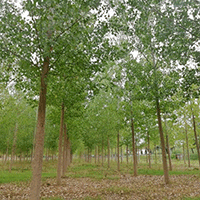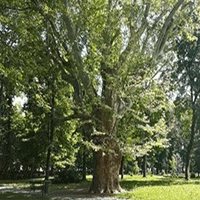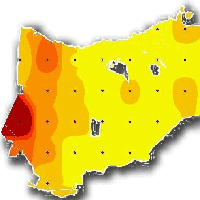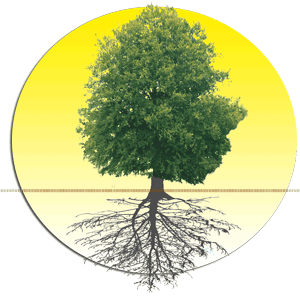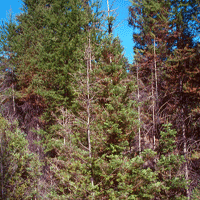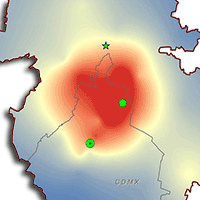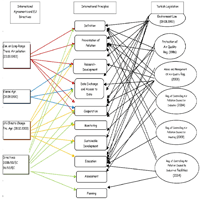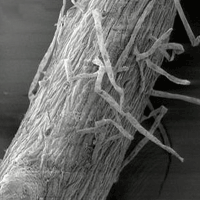Urban and periurban areas are often contaminated by several pollutants. Phytoremediation is considered to be an effective and eco-friendly strategy for the restoration of these contaminated lands. For this purpose, the exploitation of ornamental plants could be an additional option, due to their positive impact on the landscape. In this paper, we reviewed a selection of species which have been proposed for utilization in phytoremediation. Several tree species have been introduced in the past into urban environments for parks, gardens and avenues, with a selection studied for their capacity to absorb, tolerate, and translocate contaminants. Shrubby and herbaceous species are also commonly exploited for their ornamental features and are now studied for phytoremediation purposes. The responses of several effective species to the presence of heavy metals or dangerous organic compounds in the growth substrate are examined in this paper.
Keywords
, , , ,
Citation
Capuana M (2020). A review of the performance of woody and herbaceous ornamental plants for phytoremediation in urban areas. iForest 13: 139-151. - doi: 10.3832/ifor3242-013
Academic Editor
Werther Guidi Nissim
Paper history
Received: Sep 18, 2019
Accepted: Feb 07, 2020
First online: Apr 14, 2020
Publication Date: Apr 30, 2020
Publication Time: 2.23 months
© SISEF - The Italian Society of Silviculture and Forest Ecology 2020
Open Access
This article is distributed under the terms of the Creative Commons Attribution-Non Commercial 4.0 International (https://creativecommons.org/licenses/by-nc/4.0/), which permits unrestricted use, distribution, and reproduction in any medium, provided you give appropriate credit to the original author(s) and the source, provide a link to the Creative Commons license, and indicate if changes were made.

Breakdown by View Type
(Waiting for server response...)
Article Usage
Total Article Views: 49890
(from publication date up to now)
Breakdown by View Type
HTML Page Views: 38476
Abstract Page Views: 5148
PDF Downloads: 5424
Citation/Reference Downloads: 25
XML Downloads: 817
Web Metrics
Days since publication: 2068
Overall contacts: 49890
Avg. contacts per week: 168.87
Article Citations
Article citations are based on data periodically collected from the Clarivate Web of Science web site
(last update: Mar 2025)
Total number of cites (since 2020): 27
Average cites per year: 4.50
Publication Metrics
by Dimensions ©
Articles citing this article
List of the papers citing this article based on CrossRef Cited-by.
(1)
Abbasi H, Pourmajidian MR, Hodjati SM, Fallah A, Nath S (2017)Effect of soil-applied lead on mineral contents and biomass in
Acer cappadocicum, Fraxinus excelsior and
Platycladus orientalis seedlings. iForest - Biogeoscience and Forestry 10 (4): 722-728.
CrossRef |
Gscholar
(2)
Abrahams PW (2002)Soils: their implications to human health. Science of the Total Environment 291: 1-32.
CrossRef |
Gscholar
(3)
Adhikari T, Kumar A (2012)Phytoaccumulation and tolerance of
Ricinus communis L. to nickel. International Journal of Phytoremediation 14: 481-492.
CrossRef |
Gscholar
(4)
Aitchison EW, Kelley SL, Alvarez PJJ, Schoor JL (2000)Phytoremediation of 1.4-dioxane by hybrid poplar trees. Water Environment Research 72: 313-321.
CrossRef |
Gscholar
(5)
Amari T, Ghnaya T, Sghaier S, Porrini M, Lucchini G, Sacchi AG, Abdelly C (2016)Evaluation of Ni
2+ phytoextraction potential in
Mesembryanthemum crystallinum (halophyte) and
Brassica juncea. Journal of Bioremediation and Biodegradation 7 (2): 336.
CrossRef |
Gscholar
(6)
Baz M, Fernandez RT (2002)Evaluating woody ornamentals for use in herbicide phytoremediation. Journal of the American Society for Horticultural Science 127 (6): 991-997.
CrossRef |
Gscholar
(7)
Becerra-Castro C, Kidd PS, Rodríguez-Garrido B, Monterroso C, Santos-Ucha P, Prieto-Fernández A (2013)Phytoremediation of hexachlorocyclohexane (HCH)-contaminated soils using
Cytisus striatus and bacterial inoculants in soils with distinct organic matter content. Environmental Pollution 178: 202-210.
CrossRef |
Gscholar
(8)
Berndes G, Fredrikson F, Borjesson P (2004)Cadmium accumulation and
Salix-based phytoextraction on arable land in Sweden. Agriculture, Ecosystem and Environment 103: 207-223.
CrossRef |
Gscholar
(9)
Bianconi D, De Paolis MR, Agnello AC, Lippi D, Pietrini F, Zacchini M, Polcaro C, Donati E, Paris P, Spina S, Massacci A (2011)Field-scale rhyzoremediation of a contaminated soil with hexachlorocyclohexane (HCH) isomers: the potential of poplars for environmental restoration and economical sustainability. In: “Handbook of Phytoremediation” (Golubev IA ed). Nova Science Publishers, Inc, New York, USA, pp. 783-794.
Gscholar
(10)
Biasioli M, Barberis R, Ajmone-Marsan F (2006)The influence of a large city on some soil properties and metals content Science of the Total Environment 356: 154-164.
CrossRef |
Gscholar
(11)
Blaylock MJ, Huang JW (2000)Phytoextraction of metals. In: “Phytoremediation of Toxic Metals: Using Plants to Clean up the Environment” (Raskin I, Ensley BD eds). John Wiley and Sons, New York, USA, pp. 53-70.
Gscholar
(12)
Boll T, Von Haaren C, Albert C (2014)How do urban dwellers react to potential landscape changes in recreation areas? A case study with particular focus on the introduction of dendromass in the Hamburg Metropolitan Region. iForest - Biogeoscience and Forestry 7 (6): 423-433.
CrossRef |
Gscholar
(13)
Borghi M, Tognetti R, Monteforti G, Sebastiani L (2007)Responses of
Populus × euramericana (P. deltoides × P. nigra) clone Adda to increasing copper concentrations. Environmental and Experimental Botany 61: 66-73.
CrossRef |
Gscholar
(14)
Bosiacki M (2008)Accumulation of cadmium in selected species of ornamental plants. Acta Scientiarium Polonorum Hortorum Cultus 7 (2): 21-31.
Gscholar
(15)
Bosiacki M, Wojciechowska E (2012)Phytoextraction of nickel by selected ornamental plants. Ecological Chemistry and Engineering 19 (3): 331-345.
CrossRef |
Gscholar
(16)
Bretzel F, Calderisi M (2006)Metal contamination in urban soils of coastal Tuscany (Italy). Environmental Monitoring and Assessment 118: 319-335.
CrossRef |
Gscholar
(17)
Budak F, Zaimoglu Z, Basci N (2011)Uptake and translocation of hexavalent chromium by selected species of ornamental plants. Polish Journal of Environmental Studies 20: 857-862.
Online |
Gscholar
(18)
Burken JG, Schnoor JL (1997)Uptake and metabolism of atrazine by poplar trees. Environmental Science and Technology 31: 1399-1406.
CrossRef |
Gscholar
(19)
Cachada A, Pato P, Rocha-Santos T, Ferreira Da Silva E, Duarte AC (2012)Levels, sources and potential human health risks of organic pollutants in urban soils. Science of Total Environment 430: 184-192.
CrossRef |
Gscholar
(20)
Cai Z, Zhou QX, Peng SW, Li KN (2010)Promoted biodegradation and microbiological effects of petroleum hydrocarbons by
Impatiens balsamina L. with strong endurance. Journal of Hazardous Material 183: 731-737.
CrossRef |
Gscholar
(21)
Caldelas JL, Araus A, Febrero J, Bort J (2012)Accumulation and toxic effects of chromium and zinc in
Iris pseudacorus L. Acta Physiologiae Plantarum 34: 1217-1228.
CrossRef |
Gscholar
(22)
Carrus G, Scopelliti M, Lafortezza R, Colangelo G, Ferrini F, Salbitano F, Agrimi M, Portoghesi L, Semenzato P, Sanesi G (2015)Go greener, feel better? The positive effects of biodiversity on the well-being of individuals visiting urban and peri-urban green areas. Landscape and Urban Planning 134: 221-228.
CrossRef |
Gscholar
(23)
Cay S (2016)Enhancement of cadmium uptake by
Amaranthus caudatus, an ornamental plant, using tea saponin. Environmental Monitoring and Assessment 188: 1-8.
CrossRef |
Gscholar
(24)
Cay S, Uyanik A, Engin MS, Kutbay HG (2015)Effect of EDTA and tannic acid on the removal of Cd, Ni, Pb and Cu from artificially contaminated soil by
Althaea rosea Cavan. International Journal of Phytoremediation 17 (1-6): 568-574.
CrossRef |
Gscholar
(25)
Chandanshive VV, Kadam SK, Khandare RV, Kurade MB, Jeon BH, Jadhav JP, Govindwar SP (2018)In situ phytoremediation of dyes from textile wastewater using garden ornamental plants, effect on soil quality and plant growth. Chemosphere 210: 968-976.
CrossRef |
Gscholar
(26)
Chen B, Adimo OA, Bao Z (2009)Assessment of aesthetic quality and multiple functions of urban green space from the users’ perspective: the case of Hangzhou Flower Garden, China. Landscape and Urban Planning 93 (1): 76-82.
CrossRef |
Gscholar
(27)
Cheng L, Wang Y, Cai Z, Liu J, Yu B, Zhou Q (2017)Phytoremediation of petroleum hydrocarbon-contaminated saline-alkali soil by wild ornamental Iridaceae species. International Journal of Phytoremediation 19 (3): 300-308.
CrossRef |
Gscholar
(28)
Cheng LJ, Zhou QX (2014)Phytoremediation of petroleum hydrocarbon contaminated soils using a wild ornamental plant
Hylotelephium spectabile (Boreau) H. Ohba. Acta Scientiae Circumstantiae 34: 980-986.
Gscholar
(29)
Cheng S, Xiao J, Xiao H, Zhang L, Wu Z (2007)Phytoremediation of triazophos by
Canna indica Linn. in a hydroponic system. International Journal of Phytoremediation 9: 453-463.
CrossRef |
Gscholar
(30)
Chiesura A (2004)The role of urban parks for the sustainable city. Landscape and Urban Planning 68: 129-138.
CrossRef |
Gscholar
(31)
Chintakovid P, Visoottiviseth S, Khokiattiwong S (2008)Potential of the hybrid marigolds for arsenic phytoremediation and income generation of remediators in Ron Phibun District, Thailand. Chemosphere 70: 1532-1537.
CrossRef |
Gscholar
(32)
Compernolle T, Van Passel S, Weyens N, Vangronsveld J, Lebbe L, Thewys T (2012)Groundwater remediation and the cost effectiveness of phytoremediation. International Journal of Phytoremediation 14 (9): 861-877.
CrossRef |
Gscholar
(33)
Conway TM, Vander Vecht J (2015)Growing a diverse urban forest: species selection decisions by practitioners planting and supplying trees. Landscape and Urban Planning 138: 1-10.
CrossRef |
Gscholar
(34)
Cunningham SD, Berti WR (1993)Remediation of contaminated soils with green plants: an overview. In Vitro Cellular and Developmental Biology - Plant 29: 207-212.
CrossRef |
Gscholar
(35)
Dadea C, Russo A, Tagliavini M, Mimmo T, Zerbe S (2017)Tree species as tools for biomonitoring and phytoremediation in urban environments: a review with special regard to heavy metals. Arboriculture and Urban Forestry 43: 155-167.
Gscholar
(36)
Desjardins D, Pitre FE, Guidi Nissim W, Labrecque M (2016)Differential uptake of silver, copper and zinc suggests complementary species-specific phytoextraction potential. International Journal of Phytoremediation 18: 598-604.
CrossRef |
Gscholar
(37)
De Miguel E, Iribarren I, Chacon E, Ordonez A, Charlesworth S (2006)Risk-based evaluation of the exposure of children to trace elements in playgrounds in Madrid (Spain). Chemosphere 66: 505-513.
CrossRef |
Gscholar
(38)
Di Baccio D, Tognetti R, Sebastiani L, Vitagliano C (2003)Responses of
Populus deltoids × P. nigra (P. × euramericana) clone I-214 to high zinc concentrations. New Phytologist 159: 443-452.
CrossRef |
Gscholar
(39)
Doty SL, Freeman JL, Cohu CM, Burken JG, Firrincieli A, Simon A (2017)Enhanced degradation of TCE on a superfund site using endophyte-assisted poplar tree phytoremediation. Environmental Science and Technology 51 (17): 10050-10058.
CrossRef |
Gscholar
(40)
Ehsan N, Nawaz R, Ahmad S, Khan MM, Hayat J (2016a)Phytoremediation of chromium-contaminated soil by an ornamental plant, vinca (
Vinca rosea L.). Journal of Environmental and Agricultural Sciences 7: 29-34.
Online |
Gscholar
(41)
Ehsan N, Nawaz R, Ahmad S, Arshad M, Umair M, Mahmood R (2016b)Use of ornamental plant “Vinca” (
Vinca rosea L.) for remediation of lead-contaminated soil. Journal of Biodiversity and Environmental Sciences 8 (3): 46-54.
Online |
Gscholar
(42)
Ehsan N, Nawaz R, Ahmad S, Arshad M, Umair M, Sarmad M (2016c)Remediation of heavy metal-contaminated soil by ornamental plant zinnia (
Zinnia elegance L.). Asian Journal of Chemistry 28 (6): 1338-1342.
CrossRef |
Gscholar
(43)
Facciotto G, Minotta G, Paris P, Pelleri F (2014)Tree farming, agroforestry and the new green revolution. A necessary alliance. In: Proceedings of the “Second International Congress of Silviculture”. Florence (Italy) 26-29 Nov 2014, pp. 7.
Online |
Gscholar
(44)
Ferrini F, Fini A (2011)Sustainable management techniques for trees in the urban areas. Journal of Biodiversity and Ecological Sciences 1: 1-19.
Online |
Gscholar
(45)
Forte J, Mutiti S (2017)Phytoremediation potential of
Helianthus annuus and
Hydrangea paniculata in copper and lead-contaminated soil. Water, Air and Soil Pollution 228: 77.
CrossRef |
Gscholar
(46)
Garbisu C, Alkorta I (2001)Phytoextraction: A cost-effective plant-based technology for the removal of metals from the environment. Bioresource Technology 77 (3): 229-236.
CrossRef |
Gscholar
(47)
Garcia R, Millan E (1998)Assessment of Cd, Pb, and Zn contamination in roadside soils and grasses from Gipuzkoa (Spain). Chemosphere 37 (8): 1615-1625.
CrossRef |
Gscholar
(48)
Giachetti G, Sebastiani L (2006)Development and chromium uptake in hybrid poplars cultivated on substrate polluted with industrial slags. Advances in Horticultural Science 20: 193-198.
Gscholar
(49)
Goswami S, Das S (2016)Copper phytoremediation potential of
Calendula officinalis L. and the role of antioxidant enzymes in metal tolerance. Ecotoxicology and Environmental Safety 126: 211-218.
CrossRef |
Gscholar
(50)
Guarino C, Paura B, Sciarrillo R (2018)Enhancing phytoextraction of HMs at real scale, by combining Salicaceae trees with microbial consortia. Frontiers in Environmental Science 6: 137.
CrossRef |
Gscholar
(51)
Guerra F, Gainza F, Pérez R, Zamudio F (2011)Phytoremediation of heavy metals using poplars (
Populus spp.): a glimpse of the plant responses to copper, cadmium and zinc stress. In: “Handbook of Phytoremediation” (Golubev IA ed), Nova Science Publishers, Inc, New York, USA, pp. 387-413.
Gscholar
(52)
Guidi W, Kadri H, Labrecque M (2012)Establishment techniques to using willow for phytoremediation on a former oil refinery in southern Quebec: achievements and constraints. Chemistry and Ecology 28 (1): 49-64.
CrossRef |
Gscholar
(53)
Guidi W, Pitre FE, Labrecque M (2013)Short-rotation coppice of willows for the production of biomass in Eastern Canada. In: “Biomass Now Sustainable Growth and Use” (Matovic MD ed), InTech Open Science, pp. 421-448.
CrossRef |
Gscholar
(54)
Guidi Nissim W, Pitre FE, Kadri H, Desjardins D, Labrecque M (2014a)Early response of willow to increasing silver concentration exposure. International Journal of Phytoremediation 16: 660-670.
CrossRef |
Gscholar
(55)
Guidi Nissim W, Voicu A, Labrecque M (2014b)Willow short-rotation coppice for treatment of polluted groundwater. Ecological Engineering 62: 102-114.
CrossRef |
Gscholar
(56)
Gülser F, Cig A, Sönmez F (2011)The determination of phytoremediation levels of ornamental plants used in landscape. Journal of International Environmental Application and Science 6: 661-667.
Online |
Gscholar
(57)
Han Y, Yuan H, Huang S, Guo Z, Xia B, Gu J (2007)Cadmium tolerance and accumulation by two species of
Iris. Ecotoxicology 16: 557-563.
CrossRef |
Gscholar
(58)
Hao XZ, Zhou DM, Li DD, Jiang P (2012)Growth, cadmium and zinc accumulation of ornamental sunflower (
Helianthus annuus L.) in contaminated soil with different amendments. Pedosphere 22: 631-639.
CrossRef |
Gscholar
(59)
Henry HF, Burken JG, Maier RM, Newman LA, Rock S, Schnoor JL, Suk WA (2013)Phytotechnologies: preventing exposures, improving public health. International Journal of Phytoremediation 15: 889-899.
CrossRef |
Gscholar
(60)
Houda Z, Bejaou Z, Albouchi A, Gupta DK, Corpas FJ (2016)Comparative study of plant growth of two poplar tree species irrigated with treated wastewater, with particular reference to accumulation of heavy metals (Cd, Pb, As, and Ni). Environmental Monitoring and Assessment 188: 99.
CrossRef |
Gscholar
(61)
Huang H, Yu N, Wang L, Gupta D, He Z, Wang K, Zhu Z, Yan X, Li T, Yang Xe (2011)The phytoremediation potential of bioenergy crop
Ricinus communis for DDTs and cadmium co-contaminated soil. Bioresource Technology 102 (23): 11034-11038.
CrossRef |
Gscholar
(62)
Huinink JTM (1998)Soil quality requirements for use in urban environments. Soil and Tillage Research 47 (1-2): 157-162.
CrossRef |
Gscholar
(63)
Huq SMI, Joardar JC, Parvin S (2005)Marigold (
Tagetes patula) and ornamental arum (
Syngonia sp.) as phytoremediators for arsenic in pot soil. Bangladesh Journal of Botany 34 (2): 65-70.
Gscholar
(64)
Hussain S, Akram M, Abbas G, Murtaza B, Shahid M, Shah NS, Bibi I, Niazi NK (2017)Arsenic tolerance and phytoremediation potential of
Conocarpus erectus L. and
Populus deltoides L. International Journal of Phytoremediation 19 (11): 985-991.
CrossRef |
Gscholar
(65)
Jensen JK, Holm PE, Nejrup J, Larsen MB, Borggaard OK (2009)The potential of willow for remediation of heavy metal polluted calcareous urban soils. Environmental Pollution 157: 931-37.
CrossRef |
Gscholar
(66)
Khalid S, Shahid M, Niazi NK, Murtaza B, Bibi I, Dumat C (2017)A comparison of technologies for remediation of heavy metal contaminated soils. Journal of Geochemical Exploration 182: 247-268.
CrossRef |
Gscholar
(67)
Khandare RV, Desai SB, Bhujbal SS, Watharkar AD, Biradar SP, Pawar PK, Govindwar SP (2017)Phytoremediation of fluoride with garden ornamentals
Nerium oleander, Portulaca oleracea, and
Pogonatherum crinitum. Environmental Science and Pollution Research 24 (7): 6833-6839.
CrossRef |
Gscholar
(68)
Khandare NOR, Kabra A, Tamboli D, Govindwar S (2011)The role of
Aster amellus Linn. in the degradation of a sulfonated azo dye Remazol Red: a phytoremediation strategy. Chemosphere 82 (8): 1147-1154.
CrossRef |
Gscholar
(69)
Killi D, Bussotti F, Gottardini E, Pollastrini M, Mori J, Tani C (2018)Photosynthetic and morphological responses of oak species to temperature and [CO
2] increased to levels predicted for 2050. Urban Forestry and Urban Greening 31: 26-37.
CrossRef |
Gscholar
(70)
Landberg T, Greger M (1994)Can heavy metal tolerant clones of
Salix be used as vegetation filters on heavy metal contaminated land? In: “Willow Vegetation Filters for Municipal Wastewaters and Sludges. A Biological Purification System” (Aronsson P, Perttu K eds). Swedish University of Agricultural Sciences, Uppsala, pp. 133-144.
Online |
Gscholar
(71)
Lee S-C, Li X, Shi W, Cheung S-C, Thornton I (2006)Metal contamination in urban, suburban, and country park soils of Hong Kong: a study based on GIS and multivariate statistics. Science of the Total Environment 356 (1-3): 45-61.
CrossRef |
Gscholar
(72)
Leštan D, Luo C-I, Li X- (2008)The use of chelating agents in the remediation of metal-contaminated soils: a review. Environmental Pollution 153: 3-13.
CrossRef |
Gscholar
(73)
Lewandowski I, Schmidt U, Londo M, Faaij A (2006)The economic value of the phytoremediation function - assessed by the example of cadmium remediation by willow (
Salix ssp.). Agricultural Systems 89 (1): 68-89.
CrossRef |
Gscholar
(74)
Li XX, Zhou ZK (2005)Endemic wild ornamental plants from Northwestern Yunnan, China. Hortscience 40: 1612-1619.
CrossRef |
Gscholar
(75)
Liu J, Zhou QX, Sun T, Wang XF (2007)Feasibility of applying ornamental plants in contaminated soil remediation. Chinese Journal of Applied Ecology 18: 1617-1623.
Gscholar
(76)
Liu J, Schnoor JL (2008)Uptake and translocation of lesser-chlorinated polychlorinated biphenyls (PCBs) in whole hybrid poplar plants after hydroponic exposure. Chemosphere 73: 1608-1616.
CrossRef |
Gscholar
(77)
Liu J, Zhou QX, Sun T, Ma LQ, Wang S (2008)Growth responses of three ornamental plants to Cd and Cd-Pb stress and their metal accumulation characteristics. Journal of Hazardous Materials 151 (1): 261-267.
CrossRef |
Gscholar
(78)
Liu Z, He XY, Chen W, Yuan FH, Yan K, Tao DL (2009)Accumulation and tolerance characteristics of cadmium in a potential hyperaccumulator -
Lonicera japonica Thunb. Journal of Hazardous Materials 169 (1-3): 170-175.
CrossRef |
Gscholar
(79)
Liu J, Zhou Q, Wang S (2010)Evaluation of chemical enhancement on phytoremediation effect of Cd-contaminated soils with
Calendula officinalis L. International Journal of Phytoremediation 12 (5): 503-515.
CrossRef |
Gscholar
(80)
Liu R, Jadeja RN, Zhou Q, Liu Z (2012)Treatment and remediation of petroleum-contaminated soils using selective ornamental plants. Environmental Engineering Science 29 (6): 494-501.
CrossRef |
Gscholar
(81)
Liu J, Xin X, Zhou Q (2018)Phytoremediation of contaminated soils using ornamental plants. Environmental Reviews 26 (1): 43-54.
CrossRef |
Gscholar
(82)
Livesley SJ, McPherson GM, Calfapietra C (2016)The urban forest and ecosystem services: impacts on urban water, heat, and pollution cycles at the tree, street, and city Scale. Journal of Environmental Quality 45: 119-124.
CrossRef |
Gscholar
(83)
Ljung K, Selinus O, Otabbong E (2006a)Metals in soils of children’s urban environments in the small northern European city of Uppsala. Science of the Total Environment 366 (2-3): 749-759.
CrossRef |
Gscholar
(84)
Ljung K, Selinus O, Otabbong E, Berglund M (2006b)Metal and arsenic distribution in soil particle sizes relevant to soil ingestion by children. Applied Geochemistry 21 (9): 1613-1624.
CrossRef |
Gscholar
(85)
Mahar A, Wang P, Ali A, Awasthi MK, Lahori AH, Wang Q, Li R, Zhang Z (2016)Challenges and opportunities in the phytoremediation of heavy metals contaminated soils: a review. Ecotoxicology and Environmental Safety 126: 111-121.
CrossRef |
Gscholar
(86)
Maila M, Randima P, Cloete TE (2005)Multispecies and monoculture rhizoremediation of polycyclic aromatic hydrocarbons (PAHs) from the soil. International Journal of Phytoremediation 7 (2): 87-98.
CrossRef |
Gscholar
(87)
Marmiroli M, Pietrini F, Maestri E, Zacchini M, Marmiroli N, Massacci A (2011)Growth, physiological and molecular traits in Salicaceae trees investigated for phytoremediation of heavy metals and organics. Tree Physiology 31: 1319-1334.
CrossRef |
Gscholar
(88)
McGrath SP, Zhao FJ (2003)Phytoextraction of metals and metalloids from contaminated soils. Current Opinion in Biotechnology 14: 277-282.
CrossRef |
Gscholar
(89)
Meers E, Vandecasteele B, Ruttens A, Vangronsveld J, Tack FMG (2007)Potential of five willow species (
Salix spp.) for phytoextraction of heavy metals. Environmental and Experimental Botany 60 (1): 57-68.
CrossRef |
Gscholar
(90)
Meng L, Qiao M, Arp H (2011)Phytoremediation efficiency of a PAH-contaminated industrial soil using ryegrass, white clover, and celery as mono- and mixed cultures. Journal of Soils and Sediments 11 (3): 482-490.
CrossRef |
Gscholar
(91)
Miao Q, Yan JH (2013)Comparison of three ornamental plants for phytoextraction potential of chromium removal from tannery sludge. Journal of Material Cycles and Waste Management 15 (1): 98-105.
CrossRef |
Gscholar
(92)
Miller RW, Hauer RJ, Werner LP (2015)Urban forestry: planning and managing urban greenspaces (3
rd edn). Waveland Press, Long Grove, IL, USA, pp. 560.
Online |
Gscholar
(93)
Mleczek M, Rutkowski P, Rissmann I, Kaczmarek Z, Golinski P, Szentner K, Strazynska K, Stachowiak A (2010)Biomass productivity and phytoremediation potential of
Salix alba and
Salix viminalis. Biomass and Bioenergy 34 (9): 1410-1418.
CrossRef |
Gscholar
(94)
Mohammadzadeh A, Tavakoli M, Chaichi MR, Motesharezadeh B (2014)Effects of nickel and PGPBs on growth indices and phytoremediation capability of sunflower (
Helianthus annuus L.). Archives of Agronomy and Soil Science 60 (12): 1765-1778.
CrossRef |
Gscholar
(95)
Motesharezadeh B, Kamalpoor S, Alikhani HA, Zarei M, Azimi S (2017)Investigating the effects of plant growth promoting bacteria and
Glomus mosseae on cadmium phytoremediation by
Eucalyptus camaldulensis L. Pollution 3: 575-588.
CrossRef |
Gscholar
(96)
Mukherjee A, Agrawal M (2018)Use of GLM approach to assess the responses of tropical trees to urban air pollution in relation to leaf functional traits and tree characteristics. Ecotoxicology and Environmental Safety 152: 42-54.
CrossRef |
Gscholar
(97)
Nanda Kumar PBA, Dushenkov V, Motto H, Raskin I (1995)Phytoextraction: the use of plants to remove heavy metals from soils. Environmental Science and Technology 29 (5): 1232-1238.
CrossRef |
Gscholar
(98)
Nikolić M, Stevović S (2015)Family Asteraceae as a sustainable planning tool in phytoremediation and its relevance in urban areas. Urban Forestry and Urban Greening 14: 782-789.
CrossRef |
Gscholar
(99)
Pajević S, Borišev M, Nikolić N, Arsenov D, Orlović S, Zupunski M (2016)Phytoextraction of heavy metals by fast-growing trees: a review. In: “Phytoremediation Management of Environmental Contaminants” (Ansari AA, Gill SS, Gill R, Lanza GR, Newman L eds). Springer International Publishing, Cham, Switzerland, pp. 29-64.
CrossRef |
Gscholar
(100)
Pathak V, Tripathi BD, Mishra VK (2011)Evaluation of anticipated performance index of some tree species for green belt development to mitigate traffic generated noise. Urban Forestry and Urban Greening 10 (1): 61-66.
CrossRef |
Gscholar
(101)
Pulford ID, Watson C (2003)Phytoremediation of heavy metal-contaminated land by trees - a review. Environment International 29: 529-540.
CrossRef |
Gscholar
(102)
Ramana S, Biswas AK, Singh AB, Ajay Naveen Kumar P, Ahirwar NK, Behera S, Subba Rao A (2012)Phytoremediation of cadmium contaminated soils by tuberose. Indian Journal of Plant Physiology 17 (1): 61-64.
Online |
Gscholar
(103)
Ramana S, Biswas AK, Singh AB, Ahirwar NK (2013)Evaluation of phytoremediation ability of some floricultural plant species. Plant Physiology Reports 18 (2): 187-190.
CrossRef |
Gscholar
(104)
Ramana S, Biswas AK, Singh AB, Ahirwar NK, Rao AS (2015)Tolerance of ornamental succulent plant crown of thorns (
Euphorbia milli) to chromium and its remediation. International Journal of Phytoremediation 17 (4): 363-368.
CrossRef |
Gscholar
(105)
Reed ST, Ayala-Silva T, Dunn CB, Gordon GG, Meerow A (2013)Screening ornamentals for their potential as accumulator plants. Journal of Agricultural Science 5 (10): 20-27.
CrossRef |
Gscholar
(106)
Ribeiro De Souza S, López De Andrade A, Anjos De Souza L, Schiavinato MA (2012)Lead tolerance and phytoremediation potential of Brazilian leguminous tree species at the seedling stage. Journal of Environmental Management 110: 299-307.
CrossRef |
Gscholar
(107)
Roloff A, Korn S, Gillner S (2009)The climate-species matrix to select tree species for urban habitats considering climate change. Urban Forest and Urban Greening 8 (4): 295-308.
CrossRef |
Gscholar
(108)
Rosselli W, Keller C, Boschi K (2003)Phytoextraction capacity of trees growing on metal contaminated soil. Plant Soil 256 (2): 265-272.
CrossRef |
Gscholar
(109)
Salt DE, Blaylock M, Nanda Kumar PBA, Dushenkov V, Ensley BD, Chet I, Raskin I (1995)Phytoremediation: a novel strategy for the removal of toxic metals from the environment using plants. Nature Biotechnology 13: 468-474.
CrossRef |
Gscholar
(110)
Saxena G, Purchase D, Mulla SI, Saratale GD, Saxena G (2019)Phytoremediation of heavy metal-contaminated sites: eco-environmental concerns, field studies, sustainability issues, and future prospects. Reviews of Environmental Contamination and Toxicology 249: 71-131.
CrossRef |
Gscholar
(111)
Scheyer JM (2000)Estimating dietary risk from soils in urban gardens. In: “Proceedings of the First International Conference on Soils of Urban, Industrial, Traffic and Mining Areas” (Burghardt W, Dornauf C eds). Essen (Germany) 12-18 July 2000, vol. 2, pp. 479-484.
Gscholar
(112)
Schleu U, Wu Q, Blume H-P (1998)Variability of soils in urban and periurban areas in Northern Germany. Catena 33 (3-4): 255-270.
CrossRef |
Gscholar
(113)
Scholz T, Hof A, Schmitt T (2018)Cooling effects and regulating ecosystem services provided by urban trees novel analysis approaches using urban tree cadastre data. Sustainability 10 (3): 1-18.
CrossRef |
Gscholar
(114)
Shah K, Pathak L (2019)Transgenic energy plants for phytoremediation of toxic metals and metalloids. In: “Transgenic Plant Technology for Remediation of Toxic Metals and Metalloids” (Narasimha M, Prasad V eds). Academic Press, CA, USA, pp. 319-340.
CrossRef |
Gscholar
(115)
Shimp JF, Tracy JC, Davis LC, Lee E, Huang W, Erickson LE, Schnoor JL (1993)Beneficial effects of plants in the remediation of soil and groundwater contaminated with organic materials. Critical Reviews in Environmental Science and Technology 23: 41-77.
CrossRef |
Gscholar
(116)
Signes-Pastor AJ, Munera-Picazo S, Burlo F, Cano-Lamadrid M, Carbonell-Barrachina AA (2015)Phytoremediation assessment of
Gomphrena globosa and
Zinnia elegans grown in arsenic-contaminated hydroponic conditions as a safe and feasible alternative to be applied in arsenic-contaminated soils of the Bengal Delta. Environmental and Monitoring Assessment 187: 387.
CrossRef |
Gscholar
(117)
Sleegers F (2010)Phytoremediation as green infrastructure and a landscape of experiences In: Proceedings of the “Annual International Conference on Soils, Sediments, Water and Energy”, vol. 15, Article 13.
Online |
Gscholar
(118)
Solanki P, Narayan M, Rabha AK, Srivastava RK (2018)Assessment of cadmium scavenging potential of
Canna indica L. Bulletin of Environmental Contamination and Toxicology 101 (4): 446-450.
CrossRef |
Gscholar
(119)
Stevović S, Mikovilović VS, Calić-Dragosavac D (2010)Environmental study of heavy metals influence on soil and Tansy (
Tanacetum vulgare L.). African Journal of Biotechnology 9: 2392-2400.
Online |
Gscholar
(120)
Subhashini V, Swamy AVVS (2013)Phytoremediation of Pb and Ni contaminated soils using
Catharanthus roseus (L.). Universal Journal of Environmental Research and Technology 3 (4): 465-472.
Online |
Gscholar
(121)
Subhashini V, Swamy AVVS (2014)Phytoremediation of metal (Pb, Ni, Zn, Cd and Cr) contaminated soils using
Canna indica. Current World Environment 9 (3): 780-784.
CrossRef |
Gscholar
(122)
Sun Y, Zhou Q (2016)Uptake and translocation of benzo[a]pyrene (B[a]P) in two ornamental plants and dissipation in soil. Ecotoxicology and Environment Safety 124: 74-81.
CrossRef |
Gscholar
(123)
Tao JM, Wang YB, Dai J (2011)Accumulation and tolerance of zinc in ornamental plant
Chlorophytum comosum. Applied Mechanics and Materials 66- 68: 524-27.
CrossRef |
Gscholar
(124)
Tauqeer HM, Ali S, Rizwan M, Ali Q, Saeed R, Iftikhar U, Ahmad R, Farid M, Abbasi GH (2016)Phytoremediation of heavy metals by
Alternanthera bettzickiana: growth and physiological response. Ecotoxicology and Environmental Safety 126: 138-146.
CrossRef |
Gscholar
(125)
Terzaghi E, Vergani L, Mapelli F, Borin S (2019)Rhizoremediation of weathered PCBs in a heavily contaminated agricultural soil: results of a biostimulation trial in semi field conditions. Science of the Total Environment 686: 484-496.
CrossRef |
Gscholar
(126)
Tiller KG (1992)Urban soil contamination in Australia. Australian Journal of Soil Research 30: 937-957.
CrossRef |
Gscholar
(127)
Turgut C, Pepe MK, Cutright TJ (2004)The effect of EDTA and citric acid on phytoremediation of Cd, Cr, and Ni from soil using
Helianthus annuus. Environmental Pollution 131 (1): 147-154.
CrossRef |
Gscholar
(128)
Turner AP, Dickinson NM, Lepp NW (1991)Indices of metal tolerance in trees. Water, Air, and Soil Pollution 57-58 (1): 617-625.
CrossRef |
Gscholar
(129)
Vassilev A, Schwitzguebel J-P, Thewys T, Lelie D, Vangronsveld J (2004)The use of plants for remediation of metal-contaminated soils. The Scientific World Journal 4: 9-34.
CrossRef |
Gscholar
(130)
Vyslouzilová M, Tlustoš P, Száková J (2003)Cadmium and zinc phytoextraction potential of seven clones of
Salix spp. planted on heavy metal contaminated soils. Plant Soil and Environment 49 (12): 542-547.
CrossRef |
Gscholar
(131)
Waranusantigul P, Kruatrachue M, Pokethitiyook P, Auesukaree C (2008)Evaluation of Pb phytoremediation potential in
Buddleja asiatica and
B. paniculata. Water Air and Soil Pollution 193: 79-90.
CrossRef |
Gscholar
(132)
Watharkar AD, Jadhav JP (2014)Detoxification and decolorization of a simulated textile dye mixture by phytoremediation using
Petunia grandiflora and
Gailardia grandiflora: a plant-plant consortial strategy. Ecotoxicology and Environmental Safety 103: 1-8.
CrossRef |
Gscholar
(133)
Wan X, Lei M, Chen T (2016)Cost-benefit calculation of phytoremediation technology for heavy-metal contaminated soil. Science of the Total Environment 563- 564: 796-802.
CrossRef |
Gscholar
(134)
Wang XF, Zhou QX (2005)Ecotoxicological effects of cadmium on three ornamental plants. Chemosphere 60 (1): 16-21.
CrossRef |
Gscholar
(135)
Wang Y, Yan A, Dai J, Wang NN, Wu D (2012)Accumulation and tolerance characteristics of cadmium in
Chlorophytum comosum: a popular ornamental plant and potential Cd hyperaccumulator. Environmental Monitoring and Assessment 184: 929-937.
CrossRef |
Gscholar
(136)
Wei SQ, Pan SW (2010)Phytoremediation for soils contaminated by phenanthrene and pyrene with multiple plant species. Journal of Soils and Sediments 10 (5): 886-894.
CrossRef |
Gscholar
(137)
Wu FZ, Yang WQ, Zhang J, Zhou LQ (2011)Growth responses and metal accumulation in an ornamental plant (
Osmanthus fragrans var.
thunbergii) submitted to different Cd levels. International Scholarly Research Network, vol. 2011, Art. ID 738138.
CrossRef |
Gscholar
(138)
Yongpisanphop J, Babel S, Kruatrachue M, Pokethitiyook P (2017)Hydroponic screening of fast-growing tree species for lead phytoremediation potential. Bulletin of Environment Contamination and Toxicology 99 (4): 518-523.
CrossRef |
Gscholar
(139)
Zacchini M, Pietrini F, Scarascia Mugnozza G, Iori V, Pietrosanti L, Massacci A (2009)Metal tolerance, accumulation and translocation in poplar and willow clones treated with cadmium in hydroponics. Water Air and Soil Pollution: 23-34.
CrossRef |
Gscholar
(140)
Zayad AM, Terry N (2003)Chromium in the environment: factors affecting biological remediation. Plant and Soil 249 (1): 139.
CrossRef |
Gscholar
(141)
Zeng P, Guo Z, Cao X, Xiao X, Liu Y, Shi L (2018)Phytostabilization potential of ornamental plants grown in soil contaminated with cadmium. International Journal of Phytoremediation 20 (4): 311-320.
CrossRef |
Gscholar
(142)
Zeng P, Guo G, Xiao X, Peng C, Feng W (2019)Phytoextraction potential of
Pteris vittata L. co-planted with woody species for As, Cd, Pb and Zn in contaminated soil. Science of the Total Environment 650 (1): 594-603.
CrossRef |
Gscholar
(143)
Zhang CP, Qui S, Zhao J, Li XJ, Quan YB (2010)Phytoremediation properties of three ornamental plants for cadmium absorption in soils. Journal of Guangxi Agricultural Science 41 (10): 1101-1103.
Online |
Gscholar
